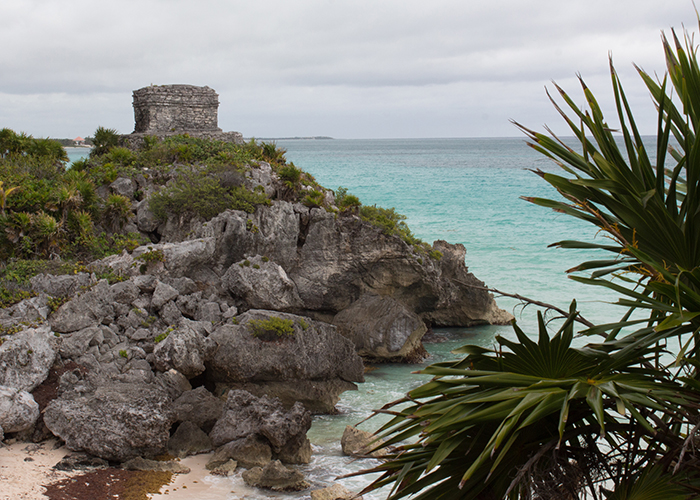 Previous Day |
Cancún, QR → Tulum, QR → Cancún, QR 270.0 mi (434.5 km) |
 More 2017 Adventures |
This morning, I had the same muy temprano transfer to the bus as yesterday, but by this point, I was a pro! Tour guide, Sara, welcomed everyone onto our southbound bus, headed for the ancient coastal city of Tulum!
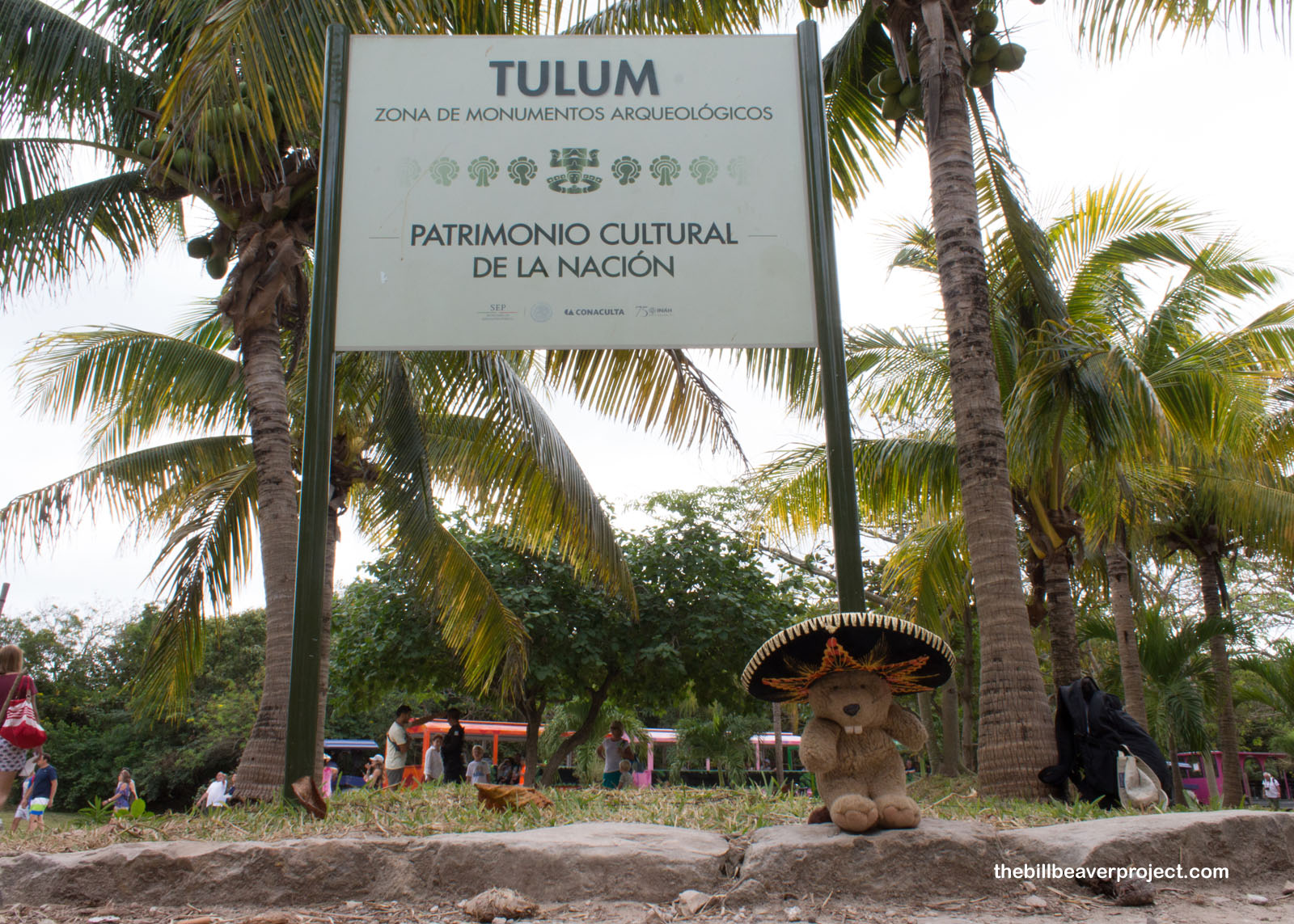 |
Technically, “Tulum” is a misnomer. This walled port city that fed Cobá deep in the jungle was actually called Zamá, or “City of the Sunrise,” but archaeologists got confused when their Yucatec-speaking acquaintances referred to the five-meter thick tulum surrounding it!
Today, Tulum is a Mexican national park, protecting not only these ruins but also important mangrove habitat and a sea turtle nesting beach! It is one of 67 national parks in Mexico, which protect beaches, deserts, volcanoes, and spectacular ruins, just like these!
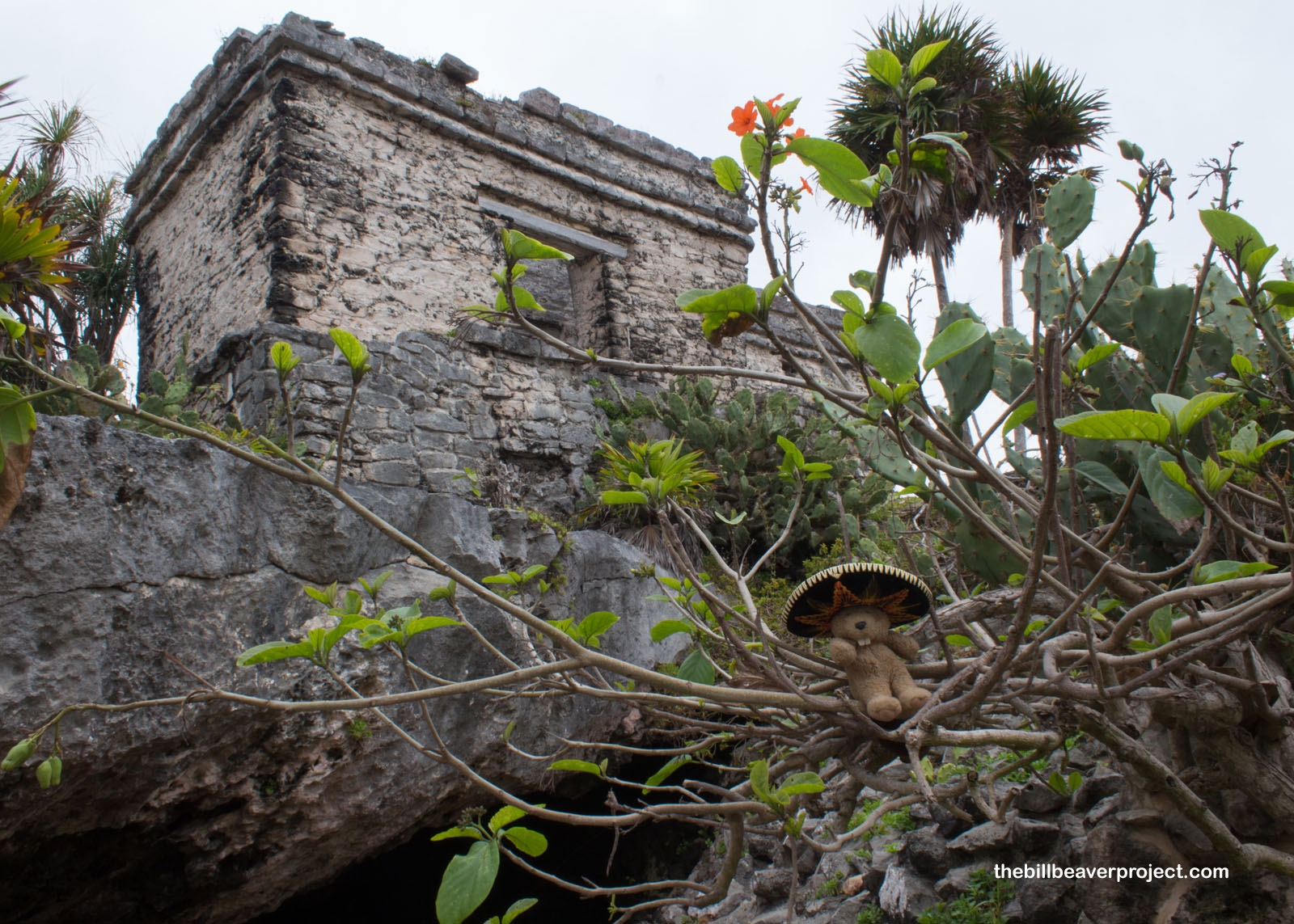 |
As the wind kicked in and rain sprinkled intermittently, I was reminded that this community was constantly at the mercy of rain and wind! The nobles and warriors who lived inside the wall paid homage to the rain god, Chac, in the salty cenotes that had eroded into the limestone bedrock. This same limestone made it difficult to grow crops, so the residents of Tulum, or Zamá, had to raise stone platforms and fill them with dirt in order to grow anything!
But even more important was their subservience to Ik, the god of winds. At his temple overlooking the crystal blue waters of the Caribbean, the Maya installed a hurricane whistle, which blew out a shrill warning when the winds blew into it strongly enough! On this exposed limestone bluff, a hurricane would really embody the wrath of an angry god!
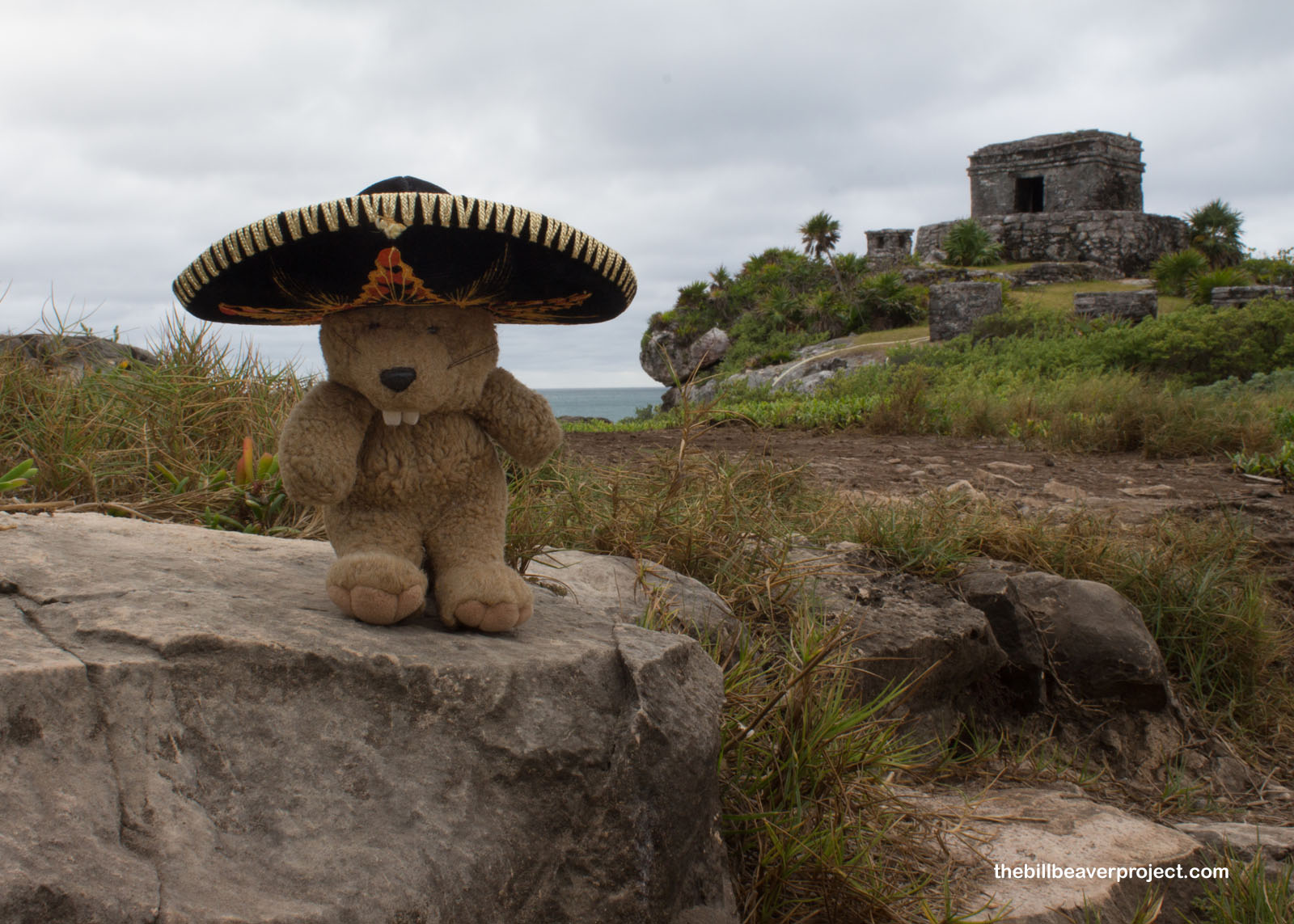 |
As we walked between temples, Sara explained that in the Popol Vuh, the book of Mayan mythology, the gods had tried to make humans four times with different substances. On the fourth, they succeeded by mixing corn paste and blood, which is why the Maya were so enthusiastic to give blood back to the gods!
Up another hill, we reached the Temple of the Descending God, where Solstice ceremonies were held. Here, architects designed openings in the walls to catch rays from first light of sun at Solstice. That’s why it was known as the City of the Sunrise! Next door, at the pyramid known as the Castillo, they gave that light back! Beyond holding ceremonies here, the Maya also used the Castillo as a lighthouse to guide ships through the beautiful, but dangerous, reefs offshore into safe harbor!
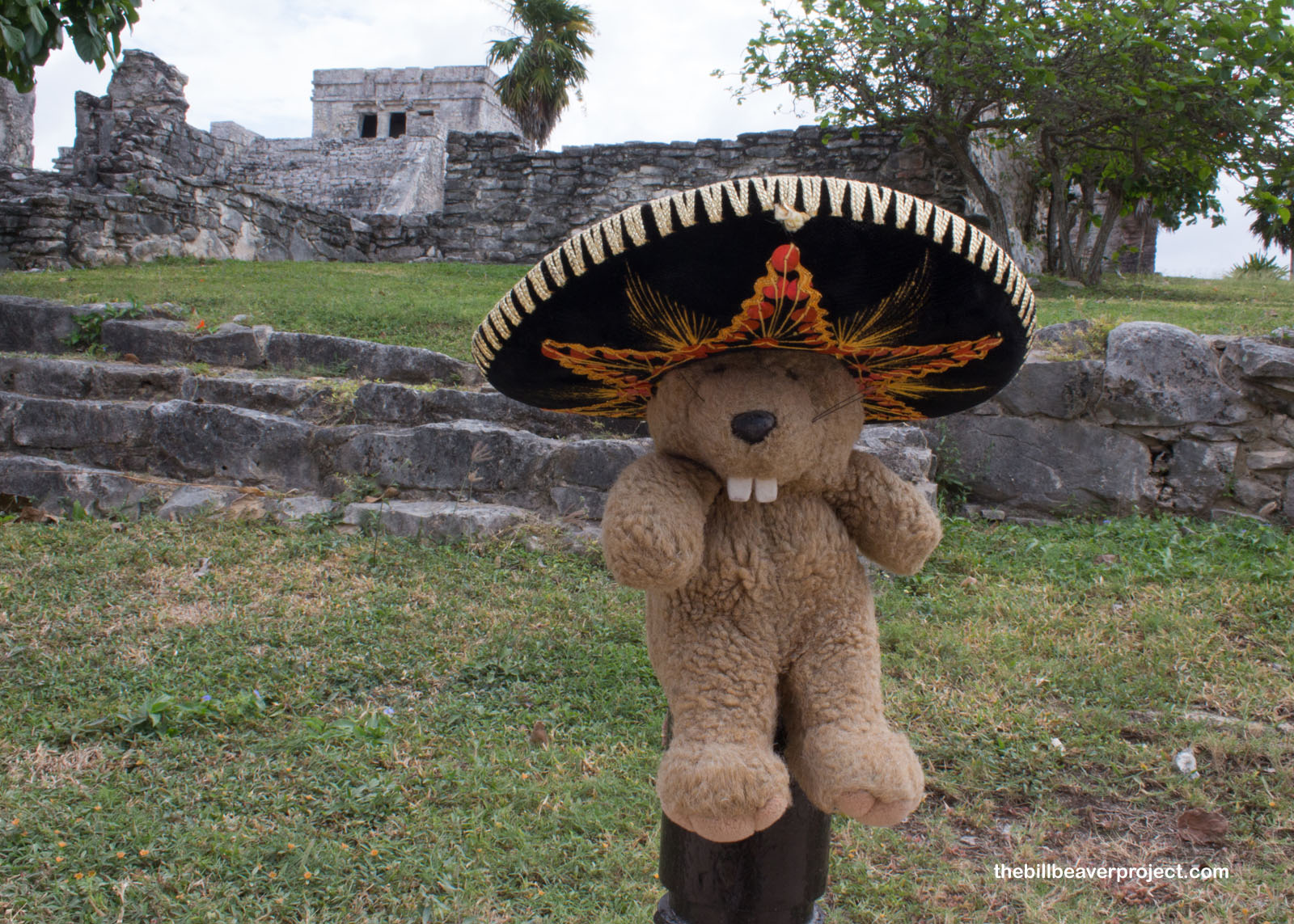 |
Today, El Castillo and the Temple of the Wind God, perched high over the Caribbean blue, are the most photographed buildings at Tulum, on sunny and stormy days alike! Unfortunately, with great beauty come great crowds, which quickly caught up with our early tour! I had to fight through hordes of selfie sticks and iguanas just to reach this spectacular overlook of the City of Wind and Water!
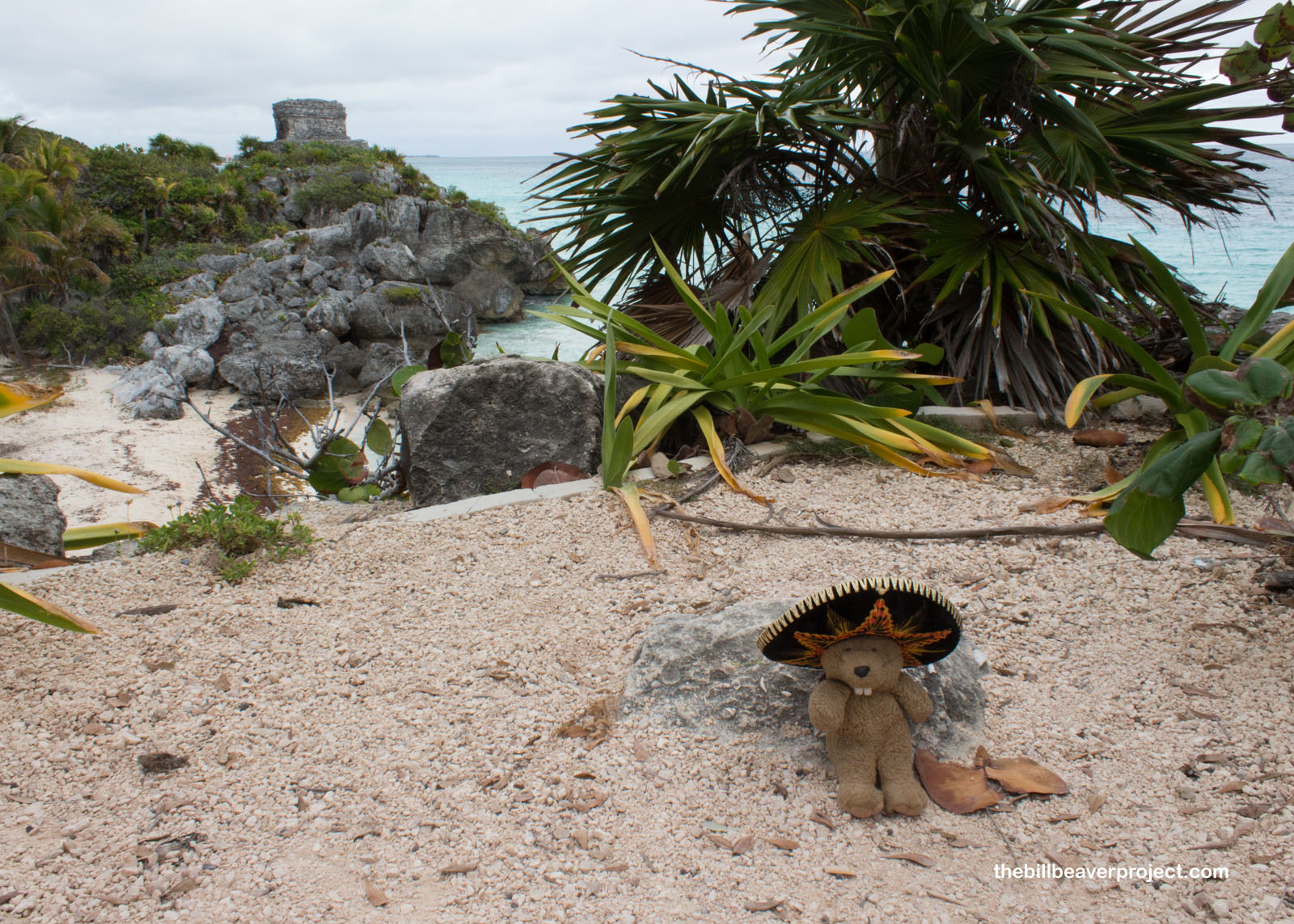 |
After a while, I needed a breather. A wooden stairway ran from the Castillo down to the beach, and I knew just what would hit the spot: a siesta! Pushing through more crowds, I successfully found myself a bed of seaweed for a quick snooze. It was perfect!
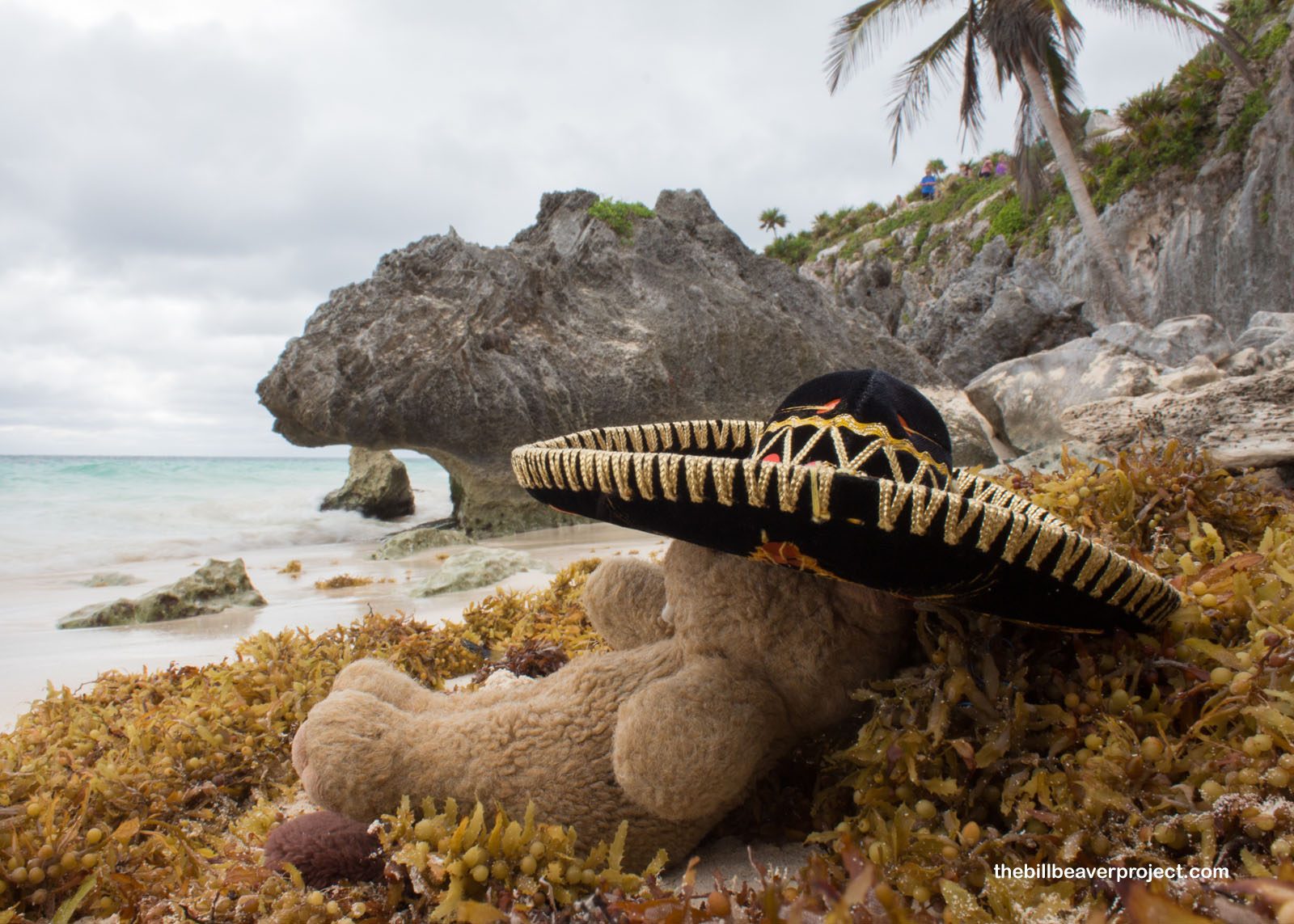 |
It was so perfect that I opened my eyes just in time to realize the bus was about to leave! So I picked up my things and ran as fast as I could back through the ceremonial city, back down the long road, back through the gift shop, and onto the bus just in time to wait for even slower tourists and hear the Spanish speakers gripe about the slow Americanos!
¡Hasta la próxima!

 Previous Day |
Total Ground Covered: 540.9 mi (870.5 km) |
 More 2017 Adventures |
